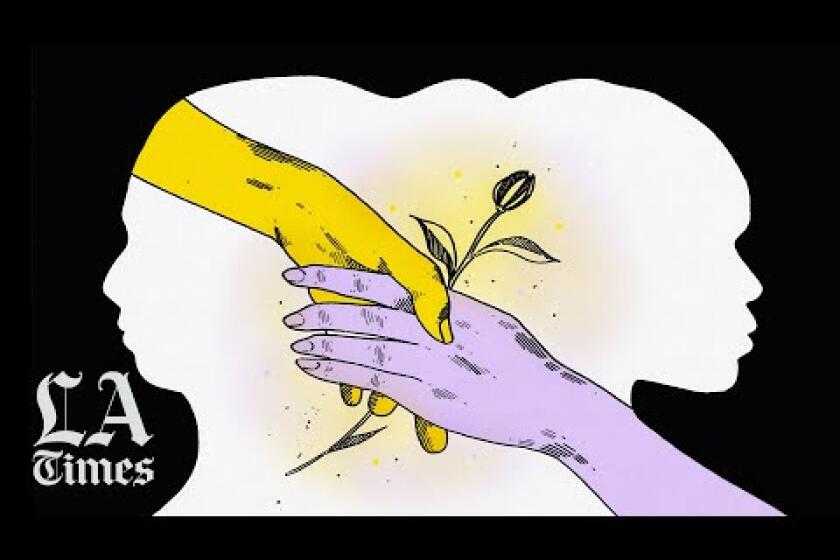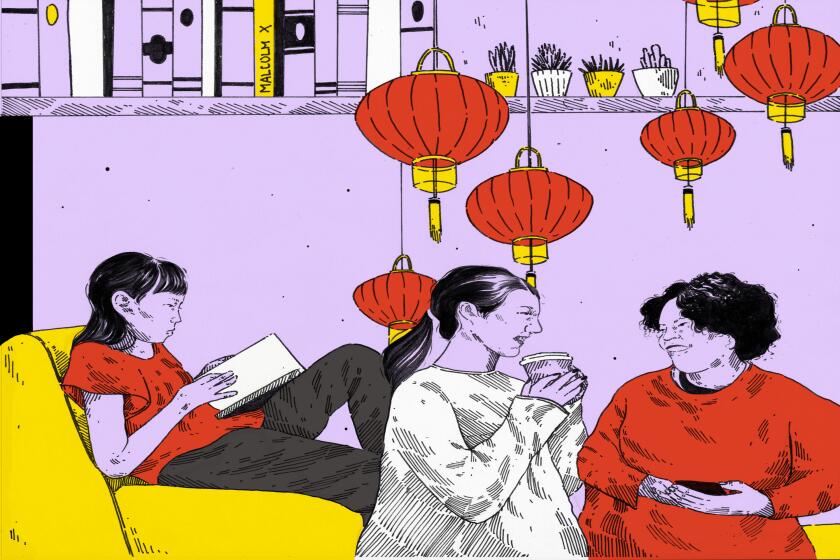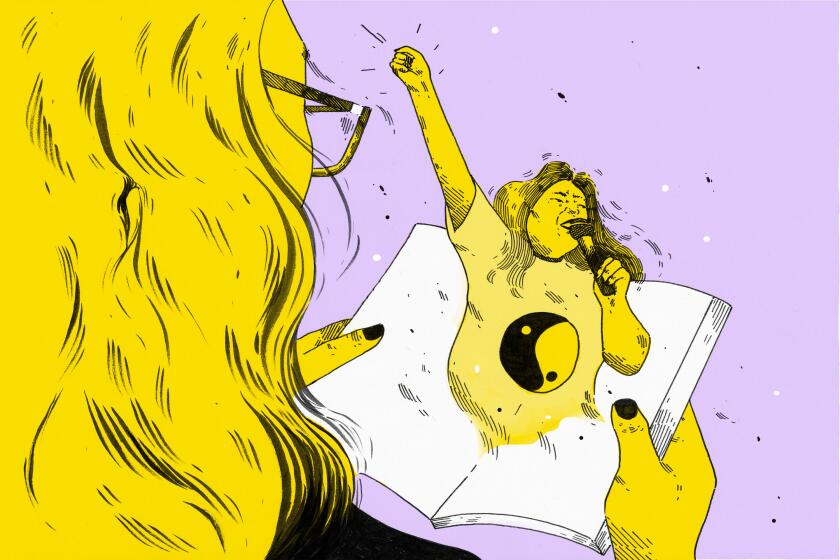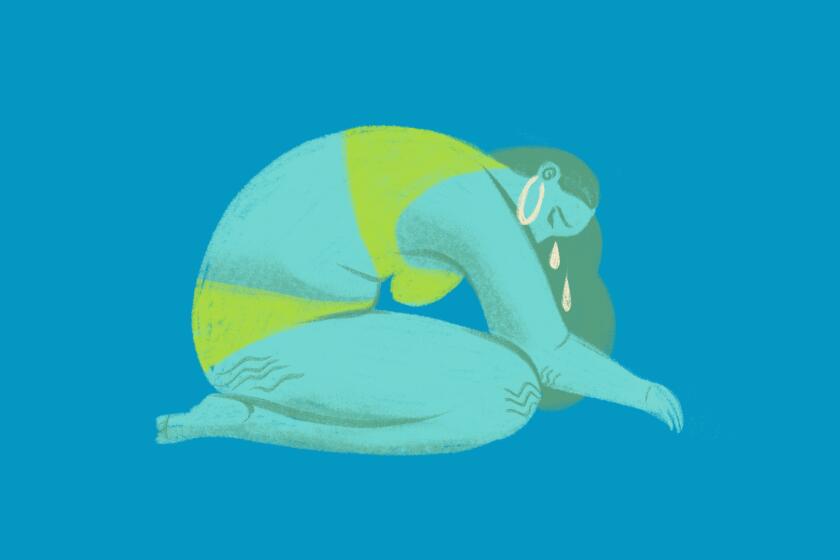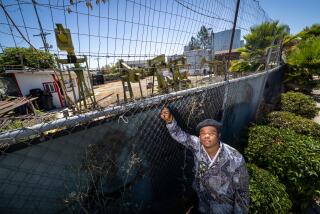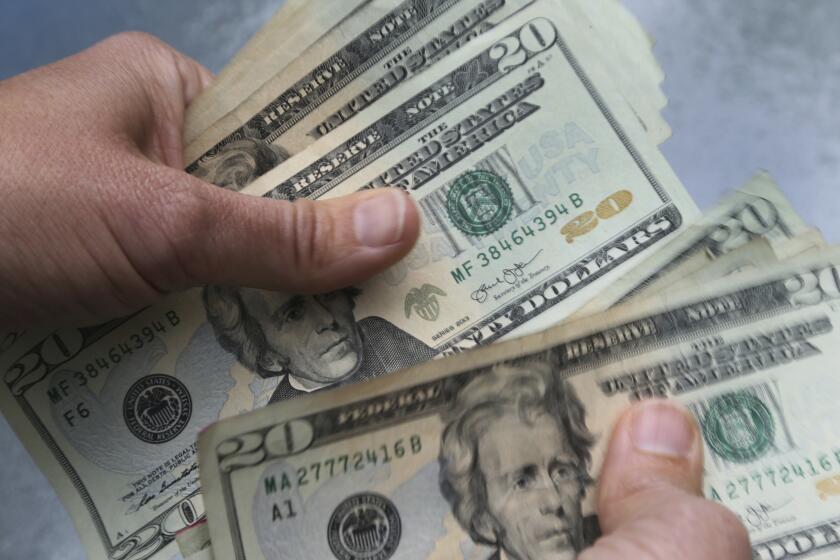What solidarity is and how you can practice it
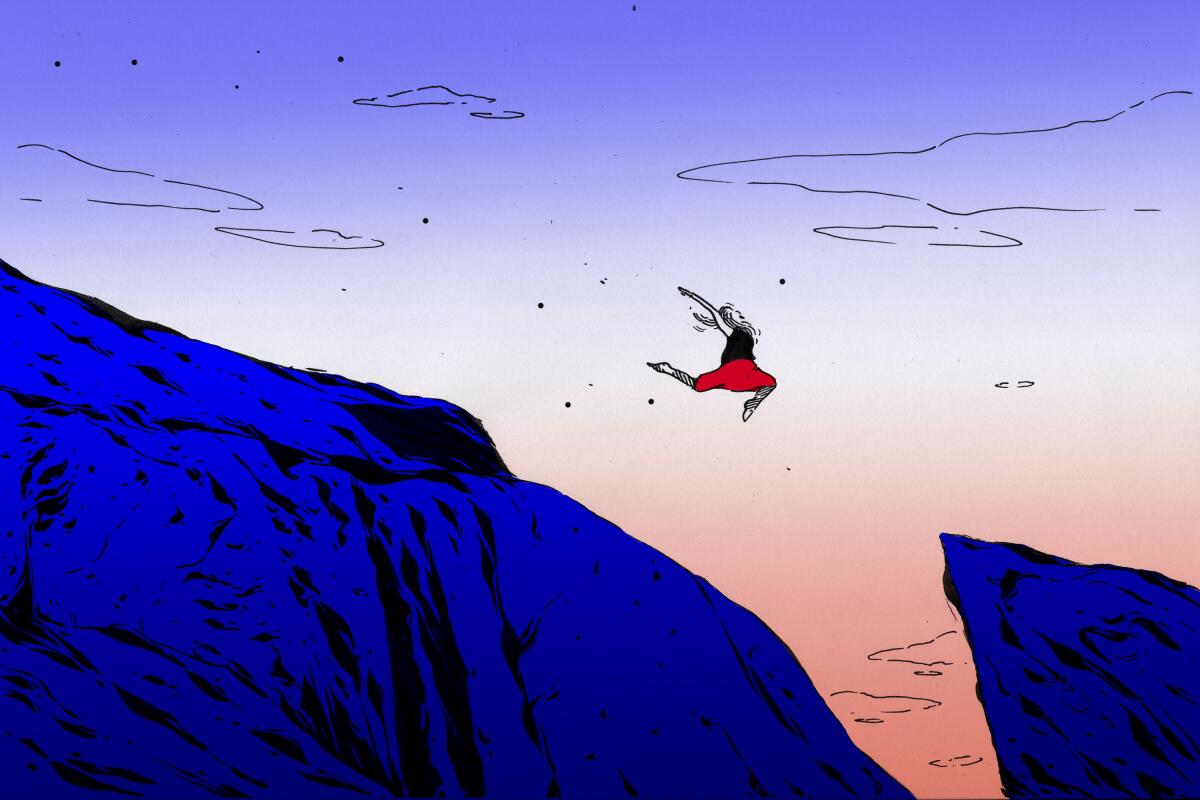
- Share via
In May — during the trial of Derek Chavin, the former Minneapolis police officer who was convicted of the murder of George Floyd — Deepa Iyer invited Bo Thao-Urabe onto her “Solidarity Is This” podcast to talk about how Asian Americans have been building solidarity with the Black community in Minnesota.
Iyer is the director of strategic initiatives at the Building Movement Project and director of Solidarity Is, which provides training and resources for building multiracial solidarity. Thao-Urabe is the founder and network and executive director at the Coalition of Asian American Leaders, based in St. Paul, Minn.
For the record:
1:48 p.m. Aug. 12, 2021A previous version of this article incorrectly identified Deepa Iyer as the strategic advisor at the Building Movement Project. She is the director of strategic initiatives.
Thao-Urabe spoke about the open letter her group wrote immediately after Floyd’s death, calling for Asian American unity with the Black community, especially as the world saw an Asian American officer stand watch as Floyd was dying.
When Iyer asked about how solidarity work has continued since then, Thao-Urabe said: “I will be honest and say the muscles for solidarity here are pretty fragile, right? And weak, and that is because communities have been kept in this perpetual cycle of scraping from the bottom. And so oftentimes, they have seen each other as the enemy.”
Solidarity has become a buzzword, and it’s often synonymous with signs, sympathy and support. But historically, solidarity isn’t about feel-good and low-effort actions. It’s challenging, risky — and sometimes illegal. Iyer and Kim Tran, an antiracist consultant and author, break down what it means to show solidarity today.

Black and Asian communities in America are often portrayed as in conflict with each other — but that ignores the moments of solidarity, resistance and collective power. (Illustration by Diana Nguyễn / For The Times)
What is solidarity?
Tran is working on a book titled “The End of Allyship: A New Era of Solidarity,” about coalitions across race in the Black Lives Matter era. She said that as a society, we’re more familiar with the idea of allyship and that we often conflate it with solidarity.
Allyship is comfortable and comforting, she said. And it’s often performative: buying a rainbow bag at Ikea for Pride Month, wearing a safety pin or changing your Instagram profile photo to a black square.
“You can sell allyship, and I think that’s a really big part of why it has failed us,” Tran said.
“And that’s horrifying because allyship comes from a really cool place. It comes from an analysis of privilege, and it comes from an analysis of what people of color and other marginalized folks don’t have as advantages in the world. But what it has become is this very marketable thing.”
Solidarity, on the other hand, is about changing unjust systems, Tran said.
The Building Movement Project differentiates “transactional solidarity” — being a spectator, bystander or mildly interested participant — from “transformative solidarity,” which requires us to challenge ourselves to commit for the long term, disrupt the status quo and deepen relationships rather than walk away when they become hard.
“It’s a daily, lifelong practice,” Iyer said. “It’s not something we do when there’s a horrible case of police violence or when there is anti-Asian violence.”
There’s a long, complex history between Black and Asian communities in America that’s often portrayed as conflict. But that misses the moments of solidarity, resistance and collective power.
What does solidarity require?
Solidarity is about taking big social risks, said Tran. She traces this definition to 1`970s women-of-color feminism, then called Third World feminism; notably, the Combahee River Collective, an organization of Black feminist lesbian women involved in early conversations about intersectionality.
It could be risking a relationship with a family member or friend by having uncomfortable conversations. It could be risking a job or promotion. It could involve breaking the law, like the protests over the Dakota Access Pipeline on the Standing Rock Sioux Reservation in North Dakota and Asians4BlackLives activists chaining themselves to the Oakland Police Department building to protest anti-Black, racially unjust policies.
“Solidarity relies on us swinging for the fences,” Tran said.
One grew up in a community that was Black and Chinese. The other read ‘Malcolm X’ at age 10 after a teacher denied her family’s history. A conversation about what Asian and Black solidarity means to them.
What does solidarity look like?
A lot of solidarity work is actually very quiet, Tran said. It could be someone who overhauls their employee benefits program after learning their company doesn’t have certain protections for their LGBTQ colleagues.
“It’s not something that is flashy,” she said. “No one asked you to do it, necessarily. But you go in and quietly change a system.”
As anti-Asian violence and harassment increased during the pandemic, the national Asian American Leaders Table on COVID-19 Racism formed a solidarity working group. Members from the Building Movement Project, the National Korean American Service & Education Consortium and Can’t Stop! Won’t Stop! Consulting launched the project Solidarity Stories to learn about solidarity practices in Asian American and Pacific Islander communities.
It tells stories of unity between the Korean and Black communities after the L.A. uprisings; Filipino and Mexican farmworkers fighting together for worker’s rights; advocacy against surveillance of Arab, Muslim and South Asian communities; Southeast Asian-led organizations addressing deportations; the need for empowerment of Pacific Islanders within AAPI spaces and more.
13-year-old Ashlyn So organized an Asian and Black solidarity rally in Oakland, uniting two communities that have often been pitted against each other but that also have a long history of collaboration.
Some ways to practice solidarity
Working across difference: The idea comes from poet and civil rights activist Audre Lorde, who wrote: “How can we use each other’s differences in our common battles for a livable future?”
Many problems come from a shared source of oppression, but it’s important to acknowledge the nuances and ways different communities are affected. It’s also important to understand your limitations if you’re advocating for trans rights but you’re not trans, fighting for prison reform but have no history of being incarcerated.
Tran says this is often tricky and a constant negotiation: figuring out when it’s helpful to stand up and when it’s better to step back.
“It’s not about you,” she said. “It’s about people who are explicitly not you.”
Centering: “Center the experiences, perspectives and leadership of people who are directly affected by a harm and recognize that they often have the solution to that harm,” said Iyer.
She points to the Dreamer movement as a good example of how the people at its center are young immigrants brought into the U.S. as children.
“They’re the ones talking about the harm and setting the policy solutions for what they need, instead of other people coming in and putting our voices on top of it,” she said.
Being a co-conspirator: Iyer said that some people find the term intimidating, but here’s how she breaks it down:
- Identify the stakes of the issue and figure out how it personally affects you and your community.
- Think about how you can use your privilege, power, positionality and access.
Tran encourages people to make an inventory of what they have to offer. It could be translating. It could be speaking up in a city council meeting. It could be responding to a protest’s call to action.
“It’s important that a co-conspirator seeks consent and permission and doesn’t go off on their own to do their own thing,” said Iyer.
Focus on deep relationships: “When we build relationships, that’s when solidarity becomes a practice,” Iyer said. “Otherwise, it’s just a vision or a hope.”
Tran encourages people to focus on relationships when having challenging conversations.
“We tend to think our political values are about education, and they’re not; they’re about emotion,” said Tran. “A lot of the research is showing that if you hit somebody with a bunch of books, articles and statistics, it’s actually not going to change their mind.”
She recommends starting from a place of curiosity. Also, especially when it comes to personal relationships, prepare for it to be a long conversation, one you might have over and over again for years.
“If it came down just to raising awareness and education, we’d be done with injustice,” Tran said. “It’s the era of Twitter. A lot of the books are already written, and we actually know a lot of what we’re going to know. … It’s through the relationships that we have with each other — that’s how we create solidarity.”
Solidarity as healing: “A really big part of solidarity that we normally don’t talk about is healing,” said Tran. “When I listen to people talk about racism that they’ve experienced, they’re actually talking about pain.”
“Solidarity is a strategy in reaction to some form of trauma or oppression,” said Iyer.
And healing requires addressing both individual impacts as well as collective ones.
“We also simultaneously have to be building the foundation of our own community,” she said.
On Iyer’s podcast, Thao-Urabe said much of the Coalition of Asian American Leaders’ solidarity work had been about internal education and political consciousness building within their own community.
“When you’re just trying to survive, you forget that what you’re fighting for is your future,” she said.
Iyer appreciates Thao-Urabe’s description of solidarity as a muscle that needs to be strengthened through practice.
“It’s not like we always know the right things to say, the right message or even the right step immediately,” said Iyer. “But we keep trying to get better and improve every single time.”
For more, Iyer runs a #SolidaritySemester course for emerging youth leaders through the Building Power Movements’ Solidarity Is project. Videos are available on Facebook.
The coronavirus pandemic, wintertime, the daily stressors of life — it all can take a toll on our mental health. Here are some resources to help you understand therapy, how to find a therapist and more.
More to Read
Sign up for The Wild
We’ll help you find the best places to hike, bike and run, as well as the perfect silent spots for meditation and yoga.
You may occasionally receive promotional content from the Los Angeles Times.
